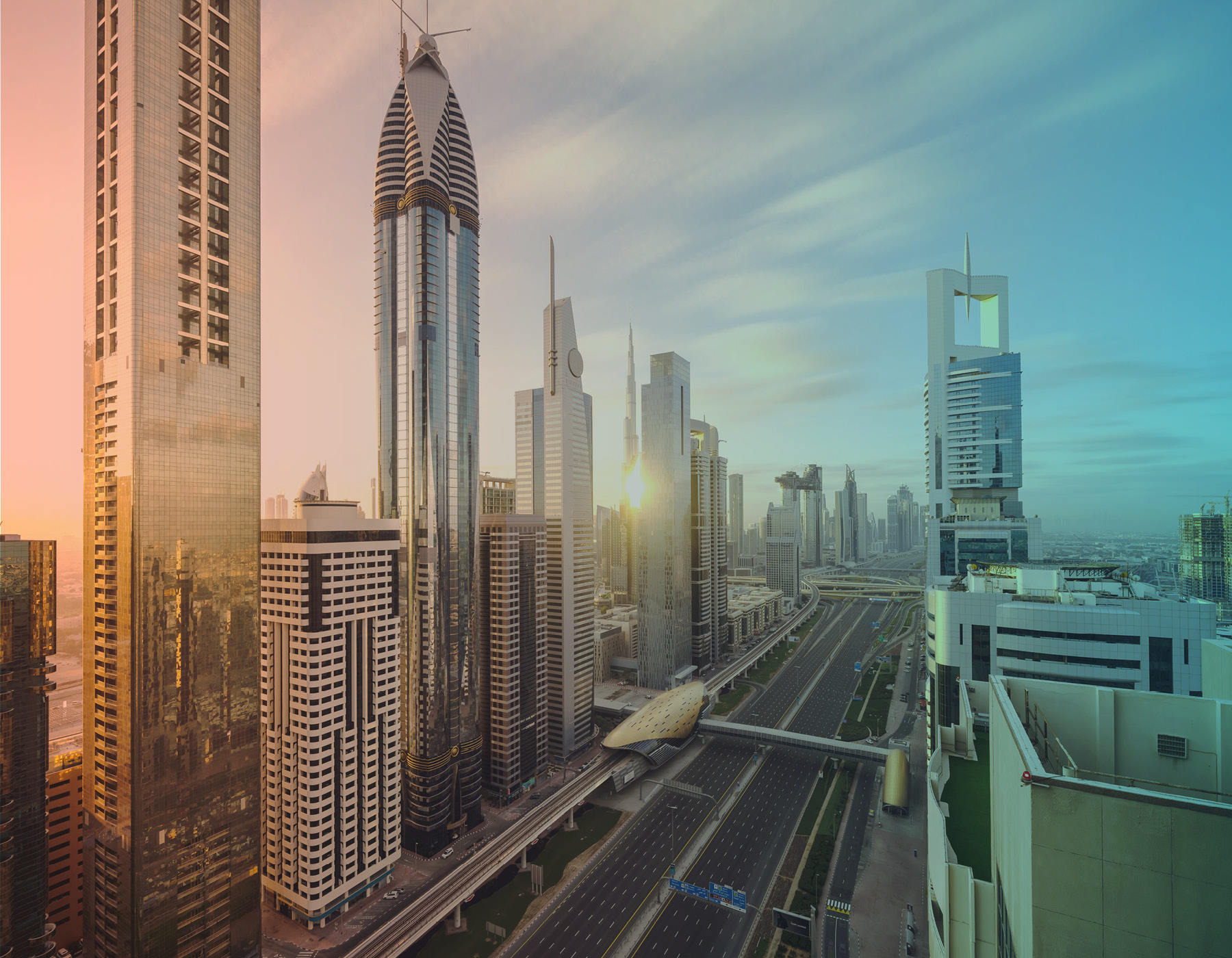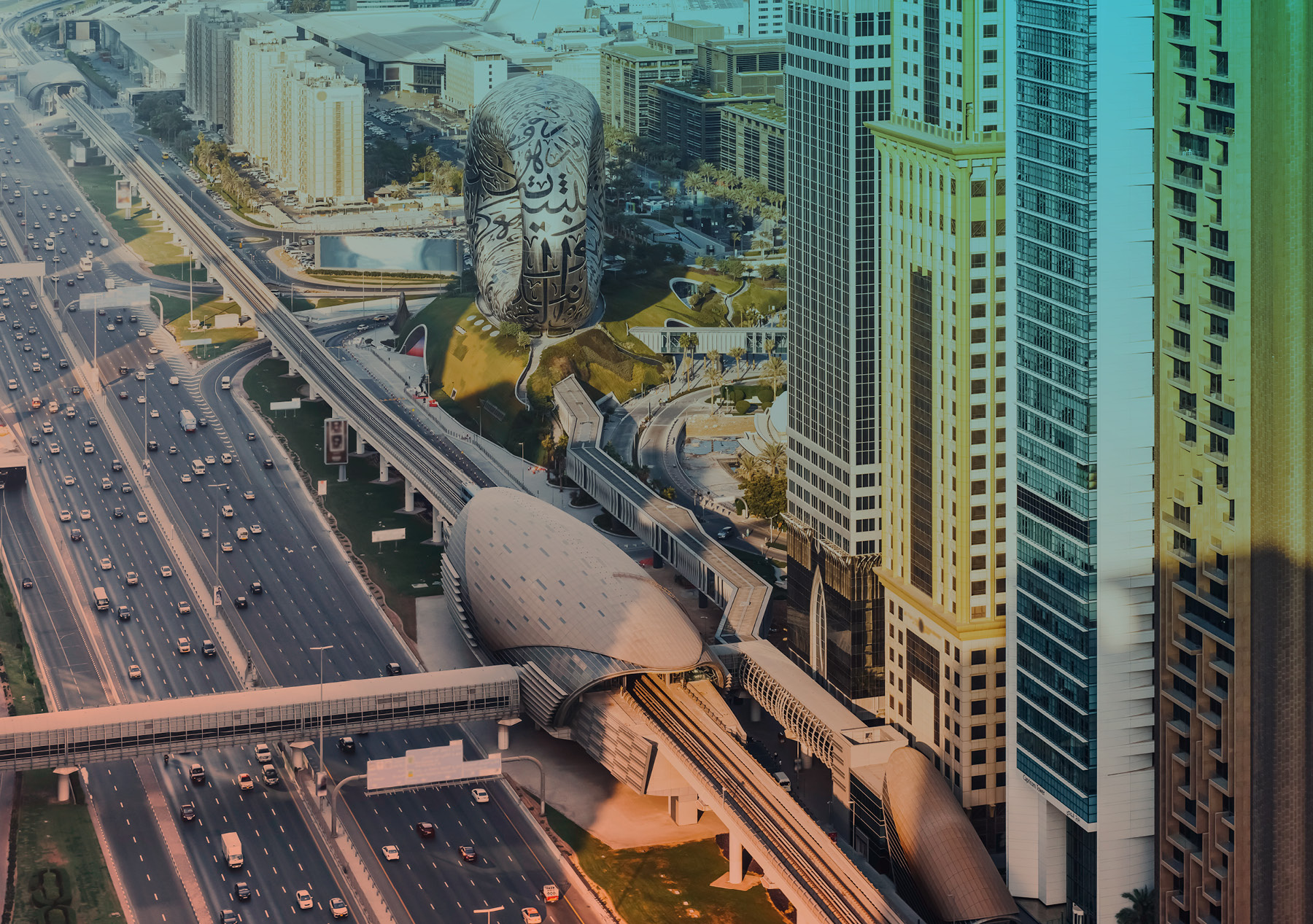Language
You can read the magazine in one of the following languages
The production of concrete was pioneered by nomadic Nabataean tribes that roamed the Arabian Peninsula in the fourth century BC. They developed a small empire in the region and built small kilns to supply mortar for rubble masonry houses when they were in their less-nomadic moods.
Later, builders in Ancient Egypt discovered that adding volcanic ash to the mix allowed it to set underwater, but by and large, concrete innovation was put on hold for a few millennia.
Today, however, as hundreds of skyscrapers shoot up across that same Arabian Peninsula, the Middle East is at the forefront of some extraordinary technological breakthroughs in every conceivable type of building material, much of it driven by the demand for more sustainable construction practices.
The Saudi Arabian government recently launched a US$1 trillion National Transformation Project to incentivize less energy-intensive construction techniques.
Among the mega-developments slated for inclusion are a flagship tourism and business community on the Red Sea, Qiddiya – soon to be the world’s biggest entertainment complex, and the colossal King Abdullah Financial District.
Neighboring countries have similarly ambitious plans to utilize a raft of cutting-edge scientific breakthroughs in concrete, steel, glass and piping to lessen their carbon footprint.

“In driving sustainability across the Middle East, the construction industry has made considerable progress in its overall impact.”
- Cynthia Corby
“Over recent years, the industry has strived to understand its impact on the environment, innovate its methods and process and its resource use,” said Cynthia Corby, Deloitte Middle East Partner and Regional Construction Industry Leader.
“In driving sustainability across the Middle East, the construction industry has made considerable progress in its overall impact.”
One consequence of the sheer scale of urbanization, particularly in the United Arab Emirates, has been the increased use of ready-mix concrete, which is manufactured for specific projects and delivered to building sites. Emerging techniques mean it can increase the number of cubic meters poured per hour by a factor of 10 and reduce wastage by 10 percent.
Saudi Readymix Concrete, Saudi Arabia’s biggest producer, has perfected a method of adding blast furnace slag, a glassy, granulated waste product, to its products for extra durability and vastly reduced emissions.
The country has also started using ground up, discarded car tires to reinforce concrete used in its oil wells, where temperatures can top 292 degrees Celsius and pressures of 3,000 PSI are common. Incorporating just 0.3 percent of tire waste can ramp up the compressive strength by nearly half.

Using smaller quantities of concrete is becoming critical as the desert-dominated region is actually running out of a key ingredient – sand.
Meanwhile, modular construction – where large sections of a building are manufactured off-site – was how Qatar managed to erect eight stadiums for last year’s FIFA World Cup that can be disassembled and relocated to countries lacking such facilities. The process uses significantly less energy, less concrete and can cut building times in half.
Using smaller quantities of concrete is becoming critical as the desert-dominated region is actually running out of a key ingredient – sand. Much of the sand used in Dubai’s Burj Khalifa had to be imported from Australia.
Sustainable construction in the Middle East will be at the top of the agenda in November when the United Nations Climate Change Conference, dubbed COP28, takes place in Dubai, particularly how so-called ‘green concrete’ can play a role.
The material is manufactured using cement partially made from waste materials such as fly ash, silica fume and wood ash so its manufacture burns less carbon dioxide. It’s also stronger and improves indoor air quality by reducing the number of compounds released during construction.

[Green concrete] is manufactured using cement partially made from waste materials such as fly ash, silica fume and wood ash so its manufacture burns less carbon dioxide.
But even that pales to a light pistachio when compared to the high-tensile, ultra-high performance concrete being produced using new, intelligent design technology, and boasting life spans measured in hundreds of years, rather than decades – even when temperatures are pushing 50 degree Celsius in Kuwait City.
It can even be 3D printed to order, calibrated for particular structures such as bridges or apartment blocks and strengthened further with steel fibers.
The two-story, 640-square-meter Dubai Municipality Building recently became the world’s largest 3D-printed building, created entirely on-site. The government is now aiming for a quarter of its new buildings to be made in the same way by 2030, reducing labor costs by up to 80 percent and overall construction budgets by more than half.
However, concrete isn’t the only building material undergoing transformation in the region – green steel is manufactured using energy-efficient iron in furnaces heated by natural gas. The new technologies being pioneered involve fitting devices that sequester up to 85 percent of the carbon produced.
Not to be outdone, pipes are also changing their metaphorical shade, with an Australian company developing high-tensile ‘green’ pipes using recycled milk bottles that slash carbon emissions in half.
The principle is also used by Dubai-based Corys Piping Systems to serve customers in Muscat, Abu Dhabi, Oman, Saudi Arabia and Iraq.

Green steel is manufactured using energy-efficient iron in furnaces heated by natural gas.
The huge sheets of glass used on the side of gleaming tower blocks have also had a clean energy makeover, with Emirates Float Glass achieving the lowest CO2 emissions per kilogram in the world through state-of-the-art machinery and recycled raw materials.
In their day, people would have gazed in awe at the clusters of new-fangled rubble masonry houses, held together with a seemingly magical substance. As the dazzling skylines of Riyadh, Dubai and Abu Dhabi take ‘new-fangled’ to ever more dizzying heights, the locals are set to remain awestruck for some time to come.
In Israel, the government has set up Contech to promote construction innovation among startups and software companies, with some extraordinary success stories.
